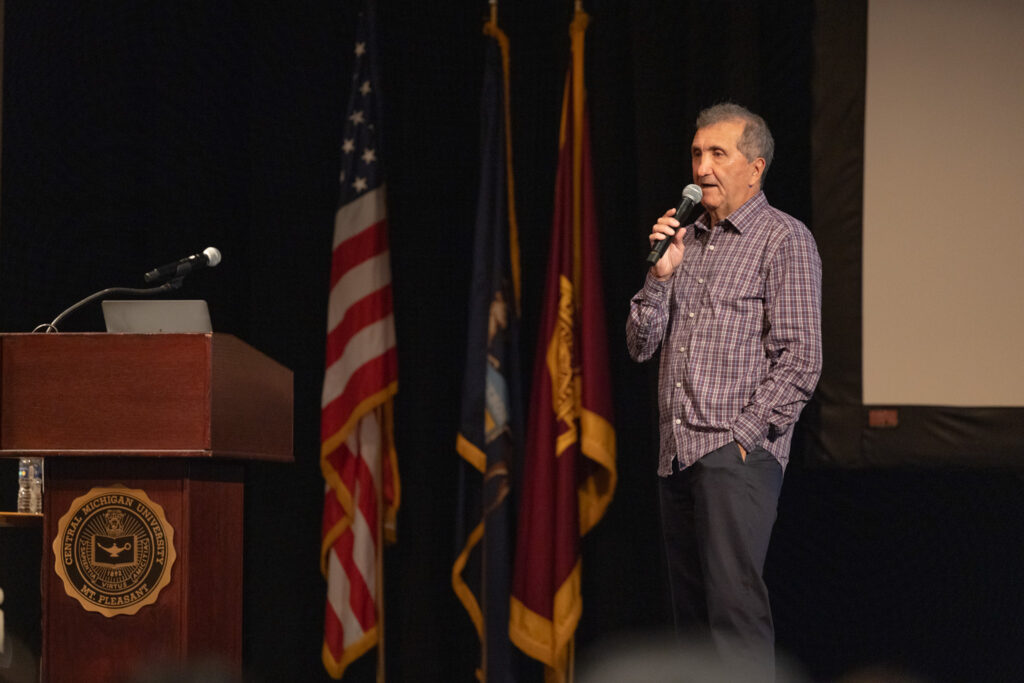Great to see the withTaskGroup improvement from fellow Doximity team member Richard (https://github.com/rlziii) make it into this public release.
We’re looking for a senior-level iOS developer to join our team at Doximity. The company is remote-first, but we get together in-person a few times per year at offsites. It’s been a great team to work with.
Want to work on an app that helps doctors provide better healthcare? Apply below, or let me know if you would like a referral.
The news that Apple is going to start manufacturing the S9 SIP in the U.S. is also likely an attempt to dodge the ITC import ban for the O2 monitoring feature.
@zorn@jawns.club I just built a new gaming pc a few weeks ago as well. I ended up with a more mid-range build with a 9600X and 7800 XT in a Lian Li A3 case. Love it so far.
@camdeardorff@frontrange.co Yeah, Peertube is pretty slick. I setup an instance and mirrored my YouTube channel to it so now I don’t have to worry about my online video content disappearing overnight. I post private links to share videos with family too.
Here’s a size comparison of the RF lens vs the EF with adapter. It’s going to take me awhile to get used to the lens being all the way retracted at 24mm and lengthening at 14 and 35mm. Camera balance is worlds better though.

@sommer@macaw.social I always have to force myself to write a paragraph of notes describing what I was doing on the last day before a long weekend. Almost forgot last week and glad I didn’t.
Took advantage of a Black Friday sale and upgraded from the EF 16-35mm f4L to this RF 14-35mm f4L. Really looking forward to not needing an adapter to use an ultrawide again–it totally threw off the balance of the camera while using it on an RF body. Not to mention this’ll be about a half pound lighter when traveling.
Was hoping to get it cheaper with Canon’s usual refurbished sale, but it turned out the sale price on a new lens was only $50 more so I went for that instead.

@clonezone I just figured out why I was seeing your posts twice. Apparently I was following both of your accounts. ? Just following the one at galumph now.
If I had a nickel for every phantom error that Xcode showed in the sidebar…
It’s that time of year again. We haven’t gotten snow yet, but it’s been dropping below the 45° cutoff of my summer tires for the last couple weeks.

@paul@tapbots.social I picked up a Unifi rack mount PDU awhile back and love it. Reasonably priced compared to other metered PDUs and a heck of a lot nicer to use.
It’s Election Day, America! Pick the candidate who is best for our democracy, and vote for her!

Wait, so Apple updated the port on the Magic Mouse, but didn’t fix the biggest bug related to the port of the Magic Mouse?!? ????
Central Michigan University was hosting a presentation by Pete Souza: the White House photographer for Reagan and Obama. So many interesting stories to share, plenty of inspiring photographs to enjoy, and I left with a signed copy of his latest book.



The Verve Pipe, putting on an amazing show downtown.

Just saw a Lamborghini Huracan STO drive by, and it was glorious. What a sound!
Just learned that Swift’s Duration measures time down to an attosecond (1×10^-18 of a second).
There’s forward thinking, and then there’s attosecond forward thinking. According to Wikipedia, an attosecond is to a second as a second is to about 31 billion years.
I suppose this gives the option of Duration being used in scientific computing, but it’ll be a long time before attoseconds would make sense to measure an interval in coding.
https://eworld.social/@ismh86/112677933919992572
I had one of these drives hooked up to my Mac 512K at the time. My 512K had a SCSI card that only supported one device on the bus instead of the typical 7, so I had to shutdown and unplug my external HD and boot from a floppy to use it.
You have no idea how big 650MB per disc felt back then. My hard drive was only 40MB.
It was also amazing to play an audio CD without slowing down the computer, since the headphone jack bypassed the Mac.